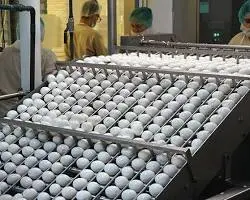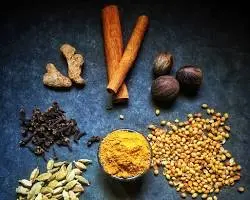
As we navigate through 2025, the global demand for high-quality goods continues to create immense opportunities for Indian entrepreneurs. While high-tech electronics and pharmaceuticals often grab the headlines, some of the most consistent and profitable export ventures lie in the agricultural sector. One such "golden" opportunity is the export of Indian eggs.
India is the world's third-largest egg producer, creating a massive surplus that is highly competitive on the global stage. But how do you turn this everyday staple into a lucrative international business?
This comprehensive guide will walk you through the entire process of exporting eggs from India. Following that, we will unveil our researched list of the other top exporting products from India for 2025, giving you a complete picture of the most profitable ventures to consider today.
[Image: A clean, modern poultry farm with healthy chickens and fresh eggs]
Part 1: The Deep Dive - Exporting Indian Eggs
The global market for Indian eggs is booming, particularly in the Middle East and Africa, due to competitive pricing and geographical proximity.
The Two-Fold Opportunity: Fresh Eggs vs. Processed Egg Products
Your first strategic decision is choosing the product form:
Table Eggs (Fresh Eggs): This is the most common form of export. It involves shipping fresh, whole eggs for direct consumption.
Pros: High demand, relatively simple product.
Cons: Highly perishable, requires a flawless cold chain, and fragile, demanding robust packaging.
Egg Products (Egg Powder, Liquid Egg): This involves processing fresh eggs into a more stable form. Egg powder, in particular, is a high-value product used extensively in the global baking and processed food industries.
Pros: Long shelf life (over a year for powder), easier to transport, less fragile, and commands a higher value.

Cons: Requires significant initial investment in processing facilities and technology.
For new exporters, starting with fresh table eggs is often the more accessible entry point.
Top Markets & Why They Buy
Oman: Currently the largest importer of Indian eggs.
UAE, Qatar, Bahrain: High demand due to large expatriate populations and reliance on food imports.
African Nations: Growing markets with increasing demand for affordable protein sources.
The Exporter's Blueprint: How to Export Eggs
Exporting a perishable product like eggs requires precision. Here is your step-by-step process:
Step 1: Sourcing from the "Egg Bowl"
Your primary sourcing hub should be Namakkal, Tamil Nadu, known as the "Egg Capital of India." Other major hubs include Andhra Pradesh and Telangana. Partner with farms that have high standards of hygiene and poultry health.
Step 2: Packaging & Cold Chain Management (Crucial)
Eggs must be graded by size and packed in clean pulp trays. These trays are then placed in strong, 5-ply corrugated cardboard cartons.
The shipment must be maintained in a cold chain from the moment it leaves the farm. This involves refrigerated trucks for transport to the port and refrigerated ("reefer") containers for sea freight. The ideal temperature is between 2°C and 5°C.
Step 3: Essential Documents & Certifications This is non-negotiable. You will need:
Importer-Exporter Code (IEC)
GST Registration
Registration with APEDA (Agricultural and Processed Food Products Export Development Authority)
Veterinary Health Certificate: Issued by the Department of Animal Husbandry, this is the most critical document, certifying that the eggs are safe for consumption and originate from disease-free birds.
Certificate of Origin
Commercial Invoice & Packing List

Bill of Lading (for sea freight)
[Image: A refrigerated "Reefer" container being loaded at a port]
Part 2: India's Export Powerhouses - The Top Products List for 2025
Beyond eggs, India's export basket is diverse and growing. Here are the top product categories showing immense potential in 2025, based on global trends and government initiatives.
1. Electronics (Especially Smartphones)
Why it's hot for 2025: Propelled by the "Make in India" initiative and Production-Linked Incentive (PLI) schemes, India has become a global mobile manufacturing powerhouse. Exports to the Middle East, Africa, and Europe are surging.
2. Pharmaceuticals & Medical Supplies
Why it's hot for 2025: As the "Pharmacy of the World," India's dominance in generic medicines, vaccines, and APIs (Active Pharmaceutical Ingredients) continues to grow. The demand for affordable healthcare solutions globally keeps this sector booming.
3. Engineering Goods (Auto Components & Machinery)
Why it's hot for 2025: Indian-made auto parts, industrial machinery, and electrical equipment are gaining a reputation for quality and cost-effectiveness, finding huge markets in Africa, Latin America, and Southeast Asia.
4. Basmati & Non-Basmati Rice
Why it's hot for 2025: A perennial powerhouse. Global food security concerns and India's status as a reliable supplier keep rice exports consistently high. Basmati rice continues to dominate the premium market in the Middle East and the West.
5. Marine Products
Why it's hot for 2025: Frozen shrimp remains a star performer. With a focus on sustainable and traceable aquaculture practices, India is a preferred supplier for the USA, EU, and Japan.
6. Organic Chemicals
Why it's hot for 2025: As global manufacturing shifts, the demand for Indian organic chemicals, used in everything from agriculture to industrial processes, has skyrocketed.
7. Textiles & Apparel (with a focus on Sustainability)
Why it's hot for 2025: While a traditional strength, the focus in 2025 is on sustainable textiles (organic cotton) and technical textiles (specialized fabrics for industries). Brands globally are looking for ethical and green supply chains.
8. Spices
Why it's hot for 2025: Indian spices like turmeric, chili, cumin, and pepper are in constant demand. The growing interest in global cuisine and the documented health benefits of spices keep this market robust.
9. Millets & "Superfoods"
Why it's hot for 2025: Following the "International Year of Millets," global awareness of these nutritious, drought-resistant grains has soared. Products like ragi, jowar, and bajra, along with others like moringa and turmeric extracts, are part of the booming global wellness trend.
10. Handicrafts & Artisanal Goods
Why it's hot for 2025: In a world of mass production, there is a growing desire for authentic, handmade products. Indian wooden crafts, pottery, and hand-woven textiles are finding a premium market on e-commerce platforms and in boutique stores worldwide.

Conclusion: Your Opportunity Awaits
From the consistent demand for agricultural staples like eggs to the high-growth potential of electronics and superfoods, India's export landscape in 2025 is ripe with opportunity.
This guide provides the "what." If you're ready for the "how"—to create a detailed business plan for a specific product, find verified international buyers, and navigate the complexities of your first shipment—then it's time to connect with an expert.
Contact us today to schedule a consultation and let us help you build your global business from India.